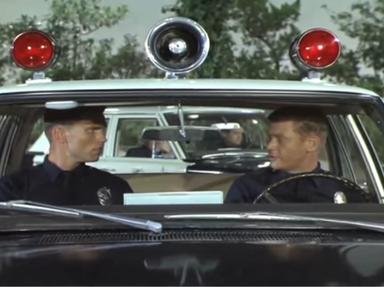Quiz Answer Key and Fun Facts
1. "One Adam-12, One Adam-12, See the man..." so squawked the dispatcher's voice on this very well-respected police procedural TV series of the late '60s and early '70s. What was the actual name of the show?
2. The basis of the show was two Los Angeles police officers patrolling their beat. What were the names of the two main characters?
3. The dispatcher was an integral part of the show. Which of the following is true?
4. There was a series of black and white police cruisers used in the seven seasons of the show. What was the model used in the latter series?
5. To ensure good filming technique, what part of the police cruiser was removed to facilitate proper cinematography?
6. Both starring officers wore medals which represented similar achievements. What skills, broadly, did the medals represent?
7. The show so accurately depicted the correct police procedures of the day, some of the show's footage was used by the LA Police Academy for teaching purposes.
8. The show used authentic codes and jargon which were never explained but if you were a frequent viewer, you soon learned what they meant. What was used for "No lights, no siren"?
9. Jack Webb and Robert A. Cinader created and produced this show.
As such, did either of our two police stars appear in other shows like "Dragnet" and "Emergency!"?
10. The show was praised for its true-to-life-depiction of being a police officer in Los Angeles. How many times do the two officers get shot over the seven seasons of the show?
Source: Author
1nn1
This quiz was reviewed by FunTrivia editor
kyleisalive before going online.
Any errors found in FunTrivia content are routinely corrected through our feedback system.
